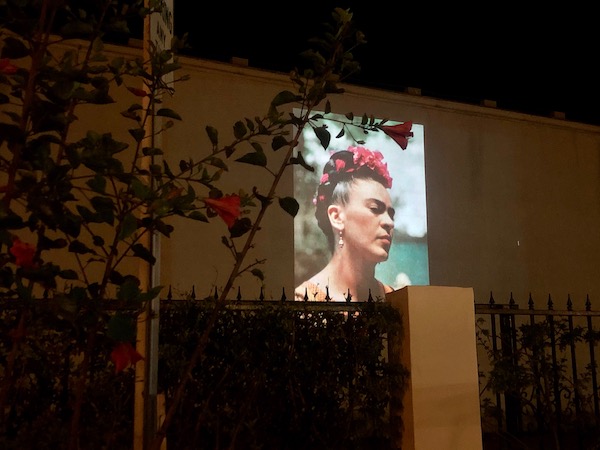Catalina Island Museum has the distinct honor of being the first Southern California museum to successfully extract me far from my quarantine pod with the promise of engaging art in situ. The irony of a relatively risky and difficult choice for my inaugural post-COVID art viewing experience wasn’t lost on me. Access to Avalon, Catalina Island is achieved via a 90-minute public ferry ride, with its closest harbor 90 minutes outside of Los Angeles.
But, I had cabin fever. I wanted out of my apartment and preferably, to be soothed by fresh air and art. When I found myself on a sunset ferry ride, the wind blowing in my hair, arriving at what appeared to be a misplaced Capri-esque island in the Pacific Ocean, I knew I had gambled wisely.
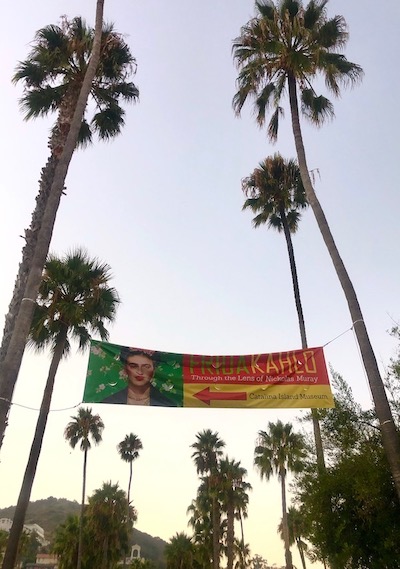
After an outdoor dinner, I enjoyed a leisurely walk from the main drag of restaurants along the water line to Catalina Island Museum. It is a new building, erected in 2016 and proudly perched on a little hill. Its mere presence speaking volumes about the priorities of the 4,000 taxpayers living on the island.
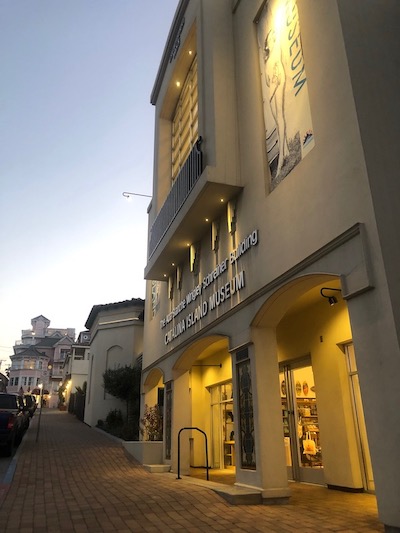
But, despite its strong local support base, like all other museums beholden to rules of California state, it is currently closed to the public due to COVID-19. Thankfully, the museum’s spunky and well-priced gift store is still open and accepting customers. This was a right its senior leadership had to fight to keep, with the perfect understanding that retail cash flow is a stop-gap necessary for admissions-based, revenue-generating institutions that have been deeply impacted by the restrictions on museums.
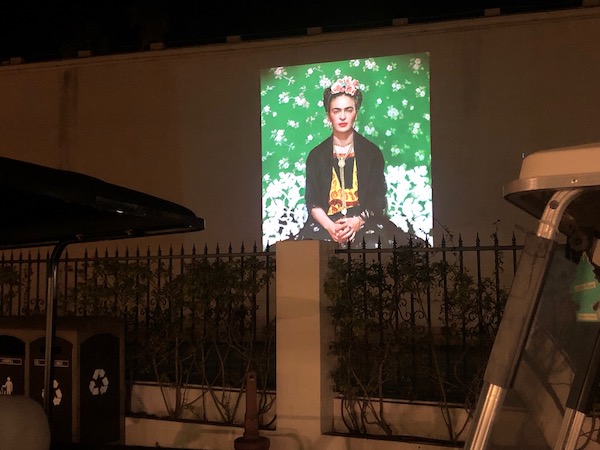
Rather than letting its Summer exhibition of photographs of Frida Kahlo and friends by photographer Nickolas Muray sit in the dark, away from visitors’ eyes, Catalina Island Museum took a simple yet effective approach to ensuring the exhibition would be publicly accessible – they began projecting it outside. Down the street from the museum, those with intention and passers-by alike can view the bulk of the show after nightfall. Iconic or rarely seen images of Frida Kahlo looking her very best or comfortable at home with the people she loved expand and recede into view. On the facade of a building on a busy corner, Frida’s most intimate, confident moments glow in the night beyond an iron gate, bushes of pink flowers, and golf carts lining the road.
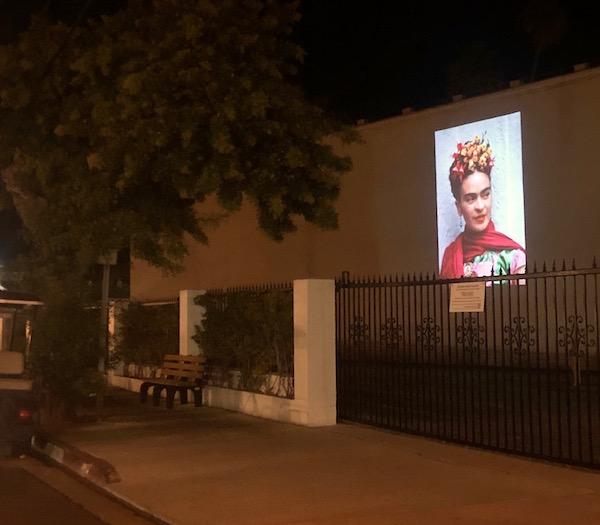
Frida looks divine as seen through the eyes of photographer Nickolas Muray, her “longtime friend, lover and confidant” (Catalina Island Museum). Colorful portraits reflect her deep interest in her Mexican heritage, while more intimate moments captured clearly situate Muray as one with privileged access to Frida and her close friends.
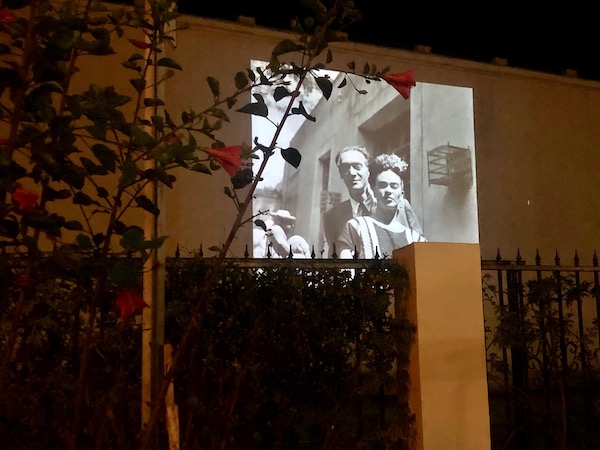
This is Frida as we don’t often see her – both intimately and contextually – yet, the whole experience is somehow comforting. I found myself smiling up at the projected photographs with the sense of intrigue and introspection that can come with viewing art, imagining what it may have been like to be a seminal, ground-breaking artist, and welcomed the feeling like an old friend I hadn’t seen in too long.
Exhibition runs through September 27, 2020, on Catalina Island at the corner of Crescent Avenue on Metropole Ave.

